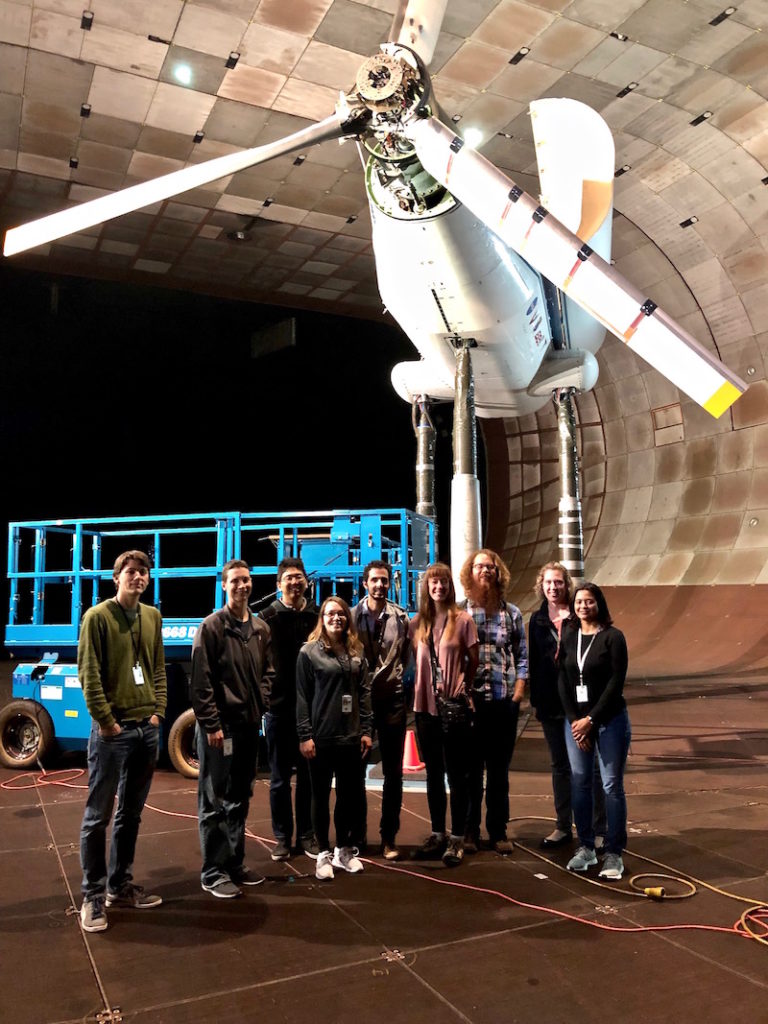Courtney Batterson (she/her)
Research Associate

As a member of the Mars Climate Modeling Center (MCMC) at NASA Ames Research Center, I help test and build the NASA Ames Mars Global Climate Model (MGCM), and I research the atmosphere and climate of Mars.
Current research
Questions
How does dust get transported in Mars’s atmosphere? What are the key factors that initiate a global dust storm on Mars? How does radiative heating of dust in the atmosphere affect atmospheric circulations?
Approach
I’m using the NASA Ames MGCM to simulate a regional dust storm, known as the B storm, at high resolution. This storm occurs over the south pole in the southern summer solstice season during years in which a global dust storm does not develop. I’m using data observed from orbit to verify that the model reasonably reproduces the regional storm. Then I’m using the model to look at the interactions of dust, radiation, and winds to see if I can deduce some of the mechanisms lifting dust from the surface and lofting it tens of kilometers in the atmosphere.
Innovations & Discoveries
The sun plays a crucial role in maintaining dust in the Martian atmosphere during the B storm. We have also demonstrated the utility of the NASA Ames MGCM at high resolution.
Technical Description
The MCMC builds, maintains, and documents the MGCM. As a member of the MCMC team, I help write the documentation for the model including technical descriptions of the physics packages, software requirements for using the model and instructions for running and testing the model. I also write analysis scripts for the Community Analysis Pipeline (CAP) development project, mostly in Python, which can be used for plotting and post-processing MGCM output. I use the MGCM in some of my scientific research as well. This not only demonstrates the utility of the MGCM but serves to validate the model and diagnose areas for improvement.
Most recently, I reproduced the B regional dust storm in the MGCM by leveraging observations from the Thermal Emission Spectrometer (on board Mars Global Surveyor) and the Mars Climate Sounder (on board Mars Reconnaissance Orbiter) to initialize the model. Previously, I was using Curiosity, Viking 1 and 2, and Pathfinder data to study secular climate change on Mars in a continuation of the project begun by Haberle and Kahre (2010). “Secular” is used here to indicate a linear, long-term change in the climate that cannot be explained by the typical climate cycle (and which is not related to human-caused climate change on Earth).

The MCMC team in the 40x80-foot wind tunnel (National Full-Scale Aerodynamics Complex) at NASA Ames Research Center.
Left to right: Tanguy Bertrand, Melinda Kahre, Richard Urata, Courtney Batterson, Alex Kling, Kathryn Steakley, Gordon Freischlad, Amanda Brecht, and Vandana Jha.
Left to right: Tanguy Bertrand, Melinda Kahre, Richard Urata, Courtney Batterson, Alex Kling, Kathryn Steakley, Gordon Freischlad, Amanda Brecht, and Vandana Jha.
Education
M.S. Meteorology. San José State University, 2021. Thesis: Observational Analysis and Modeling of the ”B” Regional Dust Storm on Mars.
B.S. Environmental Science: Global Systems and Policy; double minor in Communication Studies and Meteorology. Creighton University, 2017.
About Courtney
Where are you from, and what were you doing before BAERI?
I grew up in Bloomington, Minnesota, and currently live in San Jose, California. This is my first role related to my degrees, but during graduate school, I was employed at the San José State University Research Foundation as an Associate Research Scientist. During college, I was a server at Happy Hollow Country Club in Omaha, Nebraska.
What’s one job-related thing that you love talking about with other people?
Basic Mars facts, kind of like trivia questions. I like answering questions like: How cold is Mars? How far away is it? What does it look like? Could there be life on Mars?
How about an interest outside of work?
I love the outdoors: golfing, swimming, hiking, or just walking my dog brings me joy!
We are a community of researchers, engineers,
explorers, writers, and more. Our shared belief
in the power of science inspires our work to
better understand our planet and the universe.
explorers, writers, and more. Our shared belief
in the power of science inspires our work to
better understand our planet and the universe.
